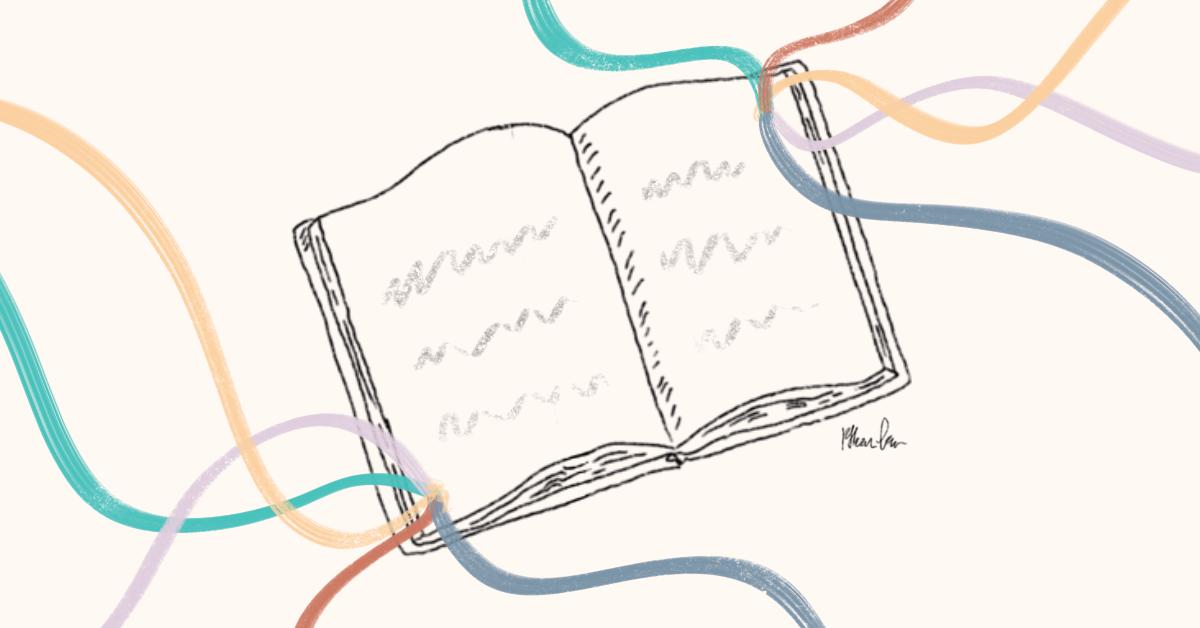By the Editors: Philip, Nicole & Karen //
Would you believe it’s 2024? Whether the past year has been one of brokenness or breakthrough, we are glad that you’re still here with us and proud of how far you’ve come!
This year is a significant one for The Tapestry Project because it will officially be our tenth anniversary. We have grown from an online publication that curates stories to having narrative workshops that create stories by and for youth, caregivers, working professionals and other community members.
In order to continue this storying work, we needed more hands on deck, so we welcomed Philip to join Nicole and Karen on our editorial team! To kick off the year, we got together to reflect on what stories meant to us. So come get to know us and our story with “story”. We look forward to getting to know yours too!
Philip:
What can stories and storytelling do in mental health? For me, a number of things. First of all, stories that are shared build a feeling of community. Depression, anxiety, and a host of other conditions we live with can be isolating. They often cause us to withdraw, or to find it difficult to function in a world of work, family, and friendships.
Shared stories tell us that we are not alone.
Second, the process of telling and retelling one’s story can be therapeutic. Challenges with mental health may result from feelings that we do not measure up to ideal life scripts: we read our lives off against idealised images that we see, and conclude that we are social failures, bad children or bad parents. Alternatively, struggles with mental health can derail careers or relationships, meaning the stories that we previously told ourselves, and which we eagerly projected into the future, no longer work for us.
Telling new stories involves going back to the building blocks of narrative – those experiences which we hold most dear – and reassembling them to make a new story, one that empowers in the present.
In my work at Tapestry, I’m looking forward to engaging in my own process of re-storying, as well as facilitating the process for others.
Nicole:
To tell a story is to be human. One of the things I love about stories and the process of “storying” is that they yield space for us to find ourselves. Whether we read about an autobiographical account of a fisherman who is lost in the ocean, or imagine a mighty oak that thrums in the astral plains – we unconsciously search for resonant parts of ourselves in these stories because of our universal quest for acceptance, hope, despair, grief and love.
As humans, we partake in stories to escape from and/or to go towards; to keep safe and to aspire. This to me is why telling mental health stories is such a sacred act of honouring our experiences as well as others’.
Not only can stories help in bringing hope and healing others, the telling of the story in itself is a healing process for the storyteller. As founding editor for the past ten years, I consider it such a privilege being able to witness this taking place throughout our editorial process and during our workshops – how people give language to their experiences and have chosen to turn their pain into purpose; their mess into their message.
Karen:
My first impulse to write was born out of survival instinct. I simply could no longer contain my despairing thoughts, and I felt like I would detonate if I didn’t channel them somewhere. However, over time, something quite magical happened. The rawness of my initial outpourings gave way to a more nuanced exploration of my inner world. As I read and continued my own unfolding story, I found myself grappling not only with darkness but also the flickers of light that I had overlooked in the initial chaos.
Writing, when done with authenticity and intention, can be a transformative force.
As I work with fellow storytellers to co-edit their stories for publishing on The Tapestry Project, I am acutely aware that each piece is more than just a story – it is an invitation for both reader and writer to tap into the human capacity to discover strength, grace, and beauty even amidst anguish.
In this coming year, we hope that you will share your stories with us. We aim to journey alongside you in an empathic editorial process that realises your story’s full potential, both as personal exploration and meaning-making and in bringing hope and healing to others.
Share your story here.
Illustration by Ethan.

